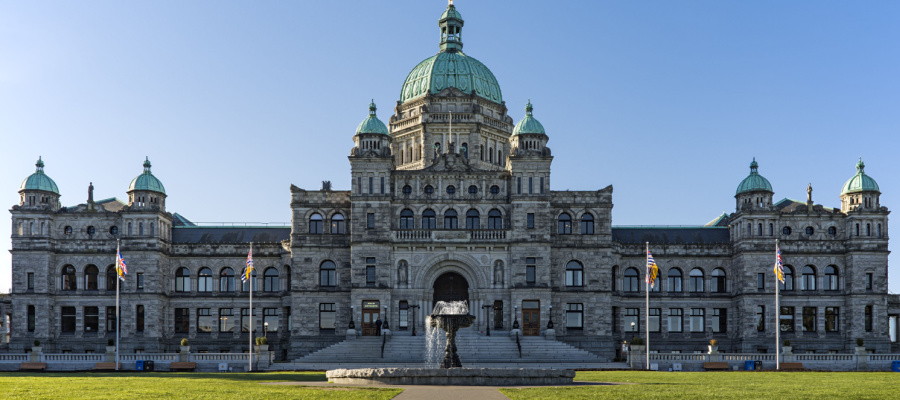Investment needed for dedicated affordable housing

The 2018 BC Budget took some major new steps towards housing affordability, in particular on the taxation side with new progressive tiers of property tax, the speculation tax and an expanded foreign buyer tax. These are important initiatives to shift housing away from being viewed primarily as an investment and back towards being a home.
The 2018 budget included commitments to build affordable units, specifically 33,700 units over 10 years. Most of these will be affordable rental stock (19,200 units) and student housing (5,000 “beds”). The remainder goes towards marginalized groups: modular housing for the homeless (3,700 units), supportive housing (2,500 units), housing for women and children fleeing abuse (1,500 units) and housing for indigenous people (1,750 units).
Our estimates, as well as those of the BC Non-Profit Housing Association, suggest much more is needed. In fact, between 5,000 to 10,000 units per year in Metro Vancouver alone to keep up with the growing population. We must also address the broad range of housing needs in BC—for the homeless, supportive housing, seniors’ housing, assisted living and immigrant and refugee settlement—as well as more broad-based non-market rental housing for low-income British Columbians.
Thus, Budget 2019 should increase new investment in order to build the 114,000 units over 10 years that were promised during the provincial election. Based on the overwhelming need for affordable housing, the focus should be on new rental, social and co-op housing. This investment would also help counter the recessionary impact of a slowdown in housing activity by keeping new construction levels high.
Budget 2019 should increase investment to build 114,000 affordable housing units over 10 years.
A housing commitment to build 11,400 units a year for a decade translates into an annual public investment of about $3 billion ($250,000 per unit construction and related cost), assuming public land owned by local governments or the provincial government is contributed. This upfront capital cost, however, would be more than paid back through rental income over the lifespan of the buildings.
Governments have taken similar action before, and BC should look to its own history of building dedicated affordable housing in the post-war years. And, between the early 1970s and early 1990s in partnership with the federal government and non-profit community groups, BC used to bring on stream approximately 2,000 units of new social or co-op housing each year. This legacy of social and cooperative housing is more than 50,000 units in Metro Vancouver.[1]
Funding for our recommended build-out should come from taxing some of the windfall gains received by home owners through higher property values. We support the 2018 BC Budget shift to more progressive property taxation (the “school tax”) and taxes on speculative activities at the provincial level. Further steps could be taken, including enabling municipalities to levy their own such taxes so that local politicians can tackle affordability more directly.
Conspicuously absent from the 2018 budget was the $400 renters’ rebate, proposed during the election. While we support a more level playing field between owners and renters, we believe it is necessary for government to find another way to extend support to low-income renters struggling with recent rapid, and extreme, rent increases. To accomplish this and to make the property tax system more progressive we recommend reformulating the $824 million per year Home Owner Grant (HOG) into an income-tested housing grant that would go to owner and renter households alike. That is, it should be redesigned to provide greater help to low-income households, then phased out gradually as household income rises (as is the case for Old Age Security or the Canada Child Benefit). This new housing grant would essentially transfer income from the wealthiest homeowners to renters.
BC should develop a more comprehensive system of rental supports and broaden accessibility to its current rental assistance programs.
The cost of the government’s proposed renters’ rebate was estimated at $265 million. A revenue-neutral way of funding this additional amount could be to eliminate the property transfer tax exemptions for first time buyers, new homes and for transfers between related individuals (with the exception of certain cases like divorces).
BC should also develop a more comprehensive system of rental supports, linking to the federal government’s Canada Housing Benefit (CHB), which will begin in 2020. BC’s rental assistance is only available to working families with children that are not on social assistance and to low-income seniors (approximately 30,000 households). BC should seek to broaden accessibility to its current rental assistance programs and integrate them with the new CHB. A combined federal-provincial government benefit would provide significant gains for households at the low end of the income spectrum where the most assistance is needed.
A concern around rental supports is that they simply enable landlords to raise rents, particularly in a tight rental market like Metro Vancouver’s. An innovative policy response to this situation is Manitoba’s Rent Assist program, which began in 2015. By design, qualifying renters (below a specified income threshold or on social assistance) in the private market do not pay more than 30% of their gross income in rent (based on 75% of the median market rent), with the rental assistance subsidy bridging the gap between that amount and actual rent.[2] This program increased housing benefits for people on social assistance without the increase going to landlords in increased rent; it is also an income-tested benefit for those not on social assistance so there is no loss of benefits when moving off of social assistance. The benefit is based on income not rent and is portable should the person or family move.
[1] Metro Vancouver, Housing Data Book 2018.
[2] Josh Brandon, Jesse Hajer and Michael Mendelson, What does an actual housing allowance look like? Manitoba’s Rent Assist program, Caledon Institute, October 2017.
Topics: Economy, Housing & homelessness, Provincial budget & finance

